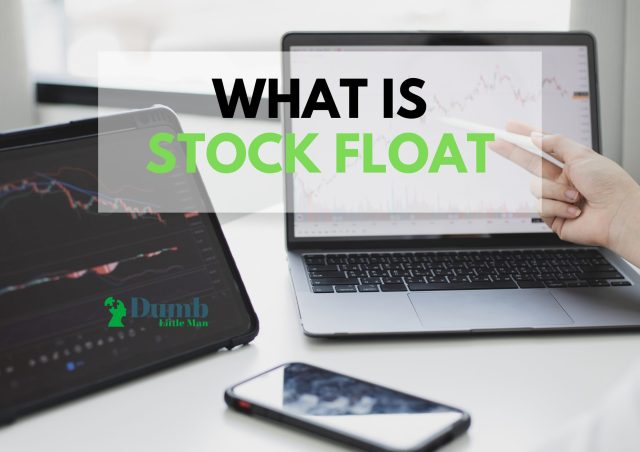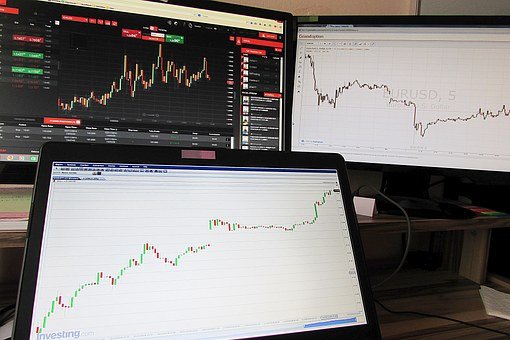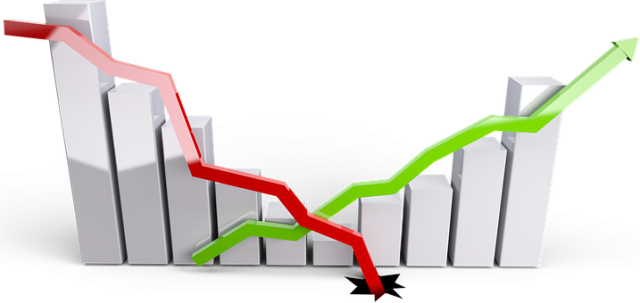What is Stock Float: Definition, How To Calculate and Example
By Jordan Blake
January 10, 2024 • Fact checked by Dumb Little Man

Want to jump straight to the answer? The best Stock Brokers are Tradestation and Tradier
The #1 Stocks and Forex Trading Course is Asia Forex Mentor
Regardless of when the stock market opens, investors and traders will be on the lookout for valuable stock to trade. One of such stocks is a company’s stock float. These are accessible outstanding shares that companies release for public investors to trade. This article will help you understand stock floats and their importance to investors.
Ezekiel Chew, a recognized and well-known forex mentor, has agreed to assist us in helping you understand better. He has taught thousands of individuals from all over the world. His teaching philosophy is based on the return-on-investment principle. Without further ado, let’s get started.
What is Stock Float

Depending on the angle you’re coming from, a stock float could mean a couple of different things. To companies, it is the total number of shares made available to the general public for investors to trade. To understand this better, have a look at the example below.
When a company is created and decides to go public, CEOs, Presidents, HODs, and other board members will have the chance to buy most of the available stock. So, if XYZ Company has a total number of 50 million shares, and the board decides to buy 30 million, the remaining 20 million that may go public is referred to as stock float. For example, Amazon (AMZN) had 500.9 million shares outstanding as of January 4, 2021. However, only 427.75 million were stock floats.
There’s no set limit to the number of shares that can be made public, and XYZ Company can actually decide to release only 5 million to the public. But the point is, as long as the shares are made public, they can be referred to as the company’s stock float.
The control of the public shares is then transferred to the secondary market because it is no longer responsible for how the public investors trade shares within the float. Now, let’s look at how exactly stock float is calculated.
How to Calculate Stock Float

Calculating a company’s stock float is very simple. There is an easy formula for it.
Formula: Floating Stock = Outstanding Shares {Shares Owned by Companies + Restricted Shares (Management & Insider’s Shares) + ESOPs}
As we explained earlier, a company's outstanding shares are the ones made public, while restricted stock or shares are those held by other members of the company’s board of directors and any other managing personnel. These stocks can’t be transferred or made public.
So, to calculate stock floats, all you have to do is subtract the outstanding shares from the restricted shares. You might be wondering how to know the exact figure. Most companies provide the important details about their stock float on their website or other financial websites, so check there for more information.
The Importance of Float Stock

We’ve talked about what stock float is and how to calculate it, but what exactly is the importance of a stock float? How does it affect traders or investors? Let’s explain.
The importance is more crucial for the investors than the company itself. This is because it shows the exact number of shares available for the public to trade. Most investors, especially the experts, avoid trading with companies with low float stock because it limits liquidity. This makes it difficult for public investors or traders to exit or enter positions in the stock market. However, with bigger floats, there’s more liquidity, making it a lot easier for institutional investors to enter and exit positions as they like. It also allows the market to move faster, resulting in lower bid-ask spreads. The information also comes in handy during short squeezes.
Public investors can also use this information to predict how well a company will fare in the future if there’s a need to raise money. The ownership structure of both the restricted and public shares also gives an insight into how investors will react to different market movements and events. A high company's float is more likely to have shareholders voting for a higher buyout price. On the other hand, if the restricted shares have higher ownership by company insiders, the response to public investors’ proposals may be different.
How the Float affects the Stock Behavior

Understanding how a float affects the stock behavior will give you a higher chance of predicting the stock market’s future movements. As we mentioned earlier, the float will dictate many aspects of the stock, such as volatility.
The float and the volatility of stock are inversely related. When a stock's float is low, it's more likely to experience significant volatility and violent price movements. While price fluctuations can be entertaining and beneficial when they work in your favor, a low float and large price moves might increase your losses due to stopping slippage.
When trading, the extreme volatility that produces more risk can also be a profitable opportunity. Companies having a low float will react to news about the company more strongly than companies with a bigger float.
Important Points to Consider

RVOL (Relative Volume) compares current trading volume to trading volume from the prior period. This is an important indication since it affects the company's liquidity and explains whether or not investors can earn from investing in it.
In addition, the float percentage is a percentage that represents the total number of shares accessible for stock trading. It's unusual for a firm to sell all of its stock in an IPO; instead, it may sell a tiny number of its outstanding shares while insiders keep a large portion of the shares, which are generally restricted.
Finally, look into the float's history to determine why the price is so low. This will help you choose whether to avoid the stock or buy it. Conducting research and ensuring that you invest in confident positions that will yield favorable outcomes are the keys to achieving success in the stock exchange market.
Best Forex Trading Course

The best forex course which is most effective is provided by Asia Forex Mentor. Through this amazing course, traders do not just make some profit, on the contrary, the pro-traders make massive profits making 6 figures per trade, with the help of financial experts, every time through their amazing strategy of mathematical probability.
This may sound unrealistic and impossible. However, there is no miracle or bragging here but the magic of mathematical probability through, the proprietary system of the one core program provided by the Asia Forex Mentor. The one core program is the recipe for ingenious trading results to humungous profits. All of this is possible due to the expert traders and trainers of the one core program who have designed strategies and know-how to edge out the market every time from basic to advanced level.
The developers of the Proprietary One Core Program are not just ordinary traders but are financial experts equipped with research-based trading strategies. These trainers have years of experience behind banks and successful trading institutions. As a result, these experts have come up with a comprehensive trading course ranging from beginner to advanced level.
Moreover, the One Core Program is not just a set of strategies to learn from but a complete trading solution with expert advice and tweaks and customized expert solutions for every individual client whether a beginner or an experienced trader. Hence, the AFM Proprietary One Core Program is the ultimate solution to all your trading needs
| RECOMMENDED TRADING COURSE | REVIEW | VISIT |
|---|---|---|
 | #1 Forex, Crypto and Stocks trading course. Ranked most comprehensive by Investopedia and Best by Benzinga. Free to Try! |  |
Featured Investing Broker of 2024
| Broker | Best For | More Details |
|---|---|---|
 | Advanced Non US Traders Read Review | securely through Avatrade website |
 | Intermediate Non-US Traders Read Review | securely through FXCC website |
Overall Broker | securely through Forex.com website | |
 | Professional Forex Traders Read Review | securely through Interactive Brokers website |
| Broker | Best For | More Details |
|---|---|---|
 | Advanced Traders Read Review | securely through Tradestation website |
 | Intuitive Platforms Read Review | securely through Tradier website |
 | Powerful Services at a Low Cost | securely through Tradezero website |
 | Professional Forex Traders Read Review | securely through Interactive Brokers website |
Conclusion: Stock Float

The term “stock float” or floating stock simply refers to the number of shares a company or a company's total outstanding shares, a firm has made available for the public investors to trade.
It is calculated by subtracting the public shares from the restricted ones and to get more information about a company’s floating stock, you have to check finance websites.
Investors typically avoid low float stocks and look for high float stocks because the gains are higher, but make sure you do your research before and talk to a financial specialist before making any decision.
The stock float is crucial for investors to be aware of, but it is usually more relevant in specific scenarios and over a limited period of time. On the other hand, a stock is often driven by the actual performance of the underlying firm over the long term.
Stock Float FAQs
What is a good stock float?
A good float is dependent on the investor. That is what fits your budget and your desired pace in the market. Majorly for a smaller account, you’ll want to go for low float stocks, which are fast-paced, while for a larger account, you’ll want to stick with high float stocks. A good stock float is one that meets your budget as well as your preferred market pace. That's all there is to it in a nutshell. It's entirely up to you. Low float stocks are a good choice if you have a small account and enjoy fast-paced equities. Stick with high float equities if you have a larger portfolio and your slogan is “slow and steady wins the race.”
Investors choose high-float stocks because of their high returns with low volatility and consistency over the long run. Compared to the latter, a low-float stock that is unpredictable has it has high volatility. With a good stock float, trading can remain high and the chance of liquidity reduced.
How does float affect a stock?
Float is essentially a stock's liquidity measure. It can either be high or low. A float may increase when a company issues new shares to raise capital and encourage more trading. It can also be decreased through a stock buyback as the company re-investing in itself, resulting in a low stock float.
The float of a firm is similar to the inventory of a retail store. To control, you'll need a certain number of objects, or shares. This aids buyers and sellers in determining the worth of a product. Buying or selling float shares on the public market is one technique to affect the price of that inventory.
The float affects the share price of a company daily. It is the buy in the trading “buy and sell” system. Without a limited availability of shares to buy, it would be hard for traders and investors to determine value.
Jordan Blake
Jordan Blake is a cultural commentator and trending news writer with a flair for connecting viral moments to the bigger social picture. With a background in journalism and media studies, Jordan writes timely, thought-provoking content on everything from internet challenges and influencer scandals to viral activism and Gen Z trends. His tone is witty, observant, and sharp—cutting through the noise to bring readers the “why” behind the “what.” Jordan’s stories often go deeper than headlines, drawing links to pop culture, identity, and digital behavior. He’s contributed to online media hubs and social commentary blogs and occasionally moderates online panels on media literacy. When he’s not chasing the next big trend, Jordan is probably making memes or deep-diving into Reddit threads. He believes today’s trends are tomorrow’s cultural history—and loves helping readers make sense of it all.













